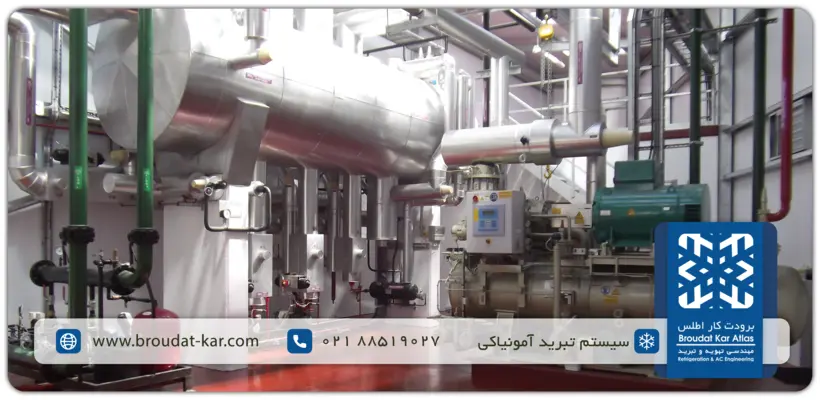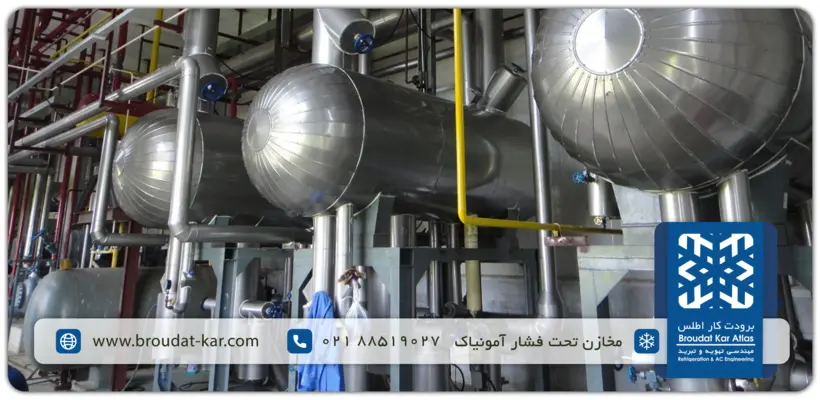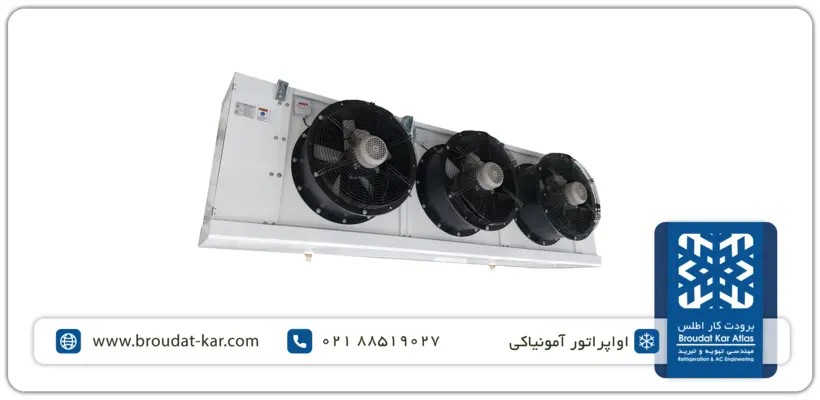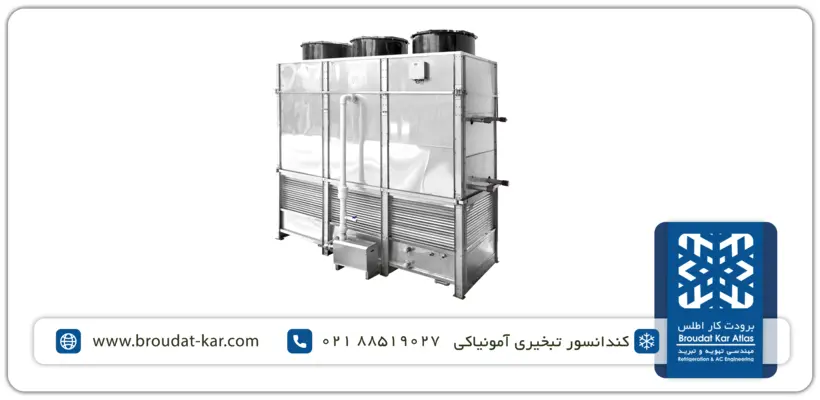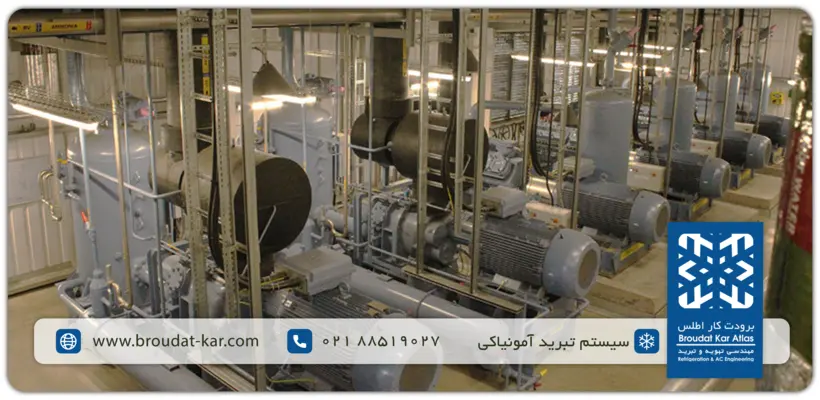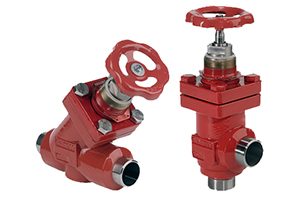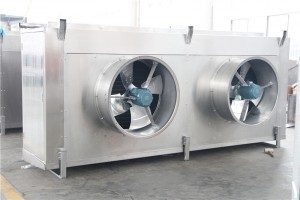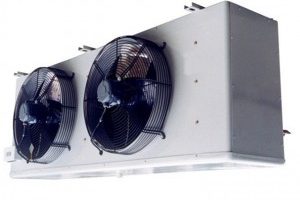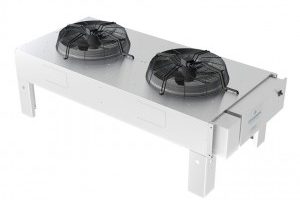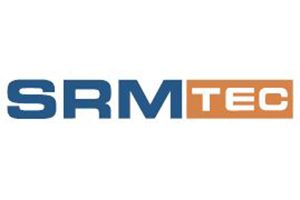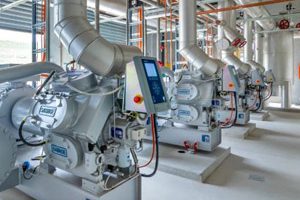Guidelines for Scheduled Inspections of Ammonia Refrigeration Systems
Proper maintenance and inspection of all ammonia refrigeration units will keep your equipment working properly and also prevent any leaks or emergencies. For this reason, having maintenance instructions for the ammonia refrigeration system is essential for your refrigeration system.
Ammonia is very dangerous and corrosive to the skin, eyes and lungs. Level exposure as low as 300 ppm (parts per million) can cause a serious health crisis or even death. If ammonia is exposed to air with a concentration of 15 to 28%, it is flammable, and if it is mixed with lubricating oils, its flammability limit increases. An explosion may occur in an enclosed space where there is a source of ignition, or where there is a source containing anhydrous ammonia that is exposed to fire.
Fortunately, the smell of ammonia is detectable at 20 ppm and most people will evacuate it when they smell it. Working around ammonia requires proper training and constant caution. Part of maintaining a safe work environment is ensuring that equipment is properly cared for and that all potential safety hazards are addressed.
Ammonia refrigeration system inspection report
Keeping an industrial refrigeration logbook is important for the following reasons.
- A detailed report helps establish the normal operating conditions of the equipment and, when regularly inspected, speeds up the process of correcting identified issues.
- It can protect your company in the event of an accident or liability.
- A detailed report is required by law in many cases. The Technical Safety and Standards Agency (TSSA) requires every company to keep records of its industrial refrigeration facilities, along with records of scheduled maintenance.
The start of each shift should include a formal check-in and daily inspection of all ammonia refrigeration equipment. The provided system checklist report should be followed by all operators on a daily basis.
Record every four hours every day
- Operating conditions, such as pressure, temperature, and ammonia levels, should be recorded at regular intervals and any abnormalities in performance should be noted.
- Results of regular inspection tours of the ammonia refrigeration system.
- Levels (both drain and fill) of ammonia and oil.
- Any maintenance activities and other observations on the equipment.
Ammonia refrigeration system compressors
An ammonia refrigeration system compressor acts as the heart of your industrial refrigeration system, providing continuous movement of refrigerant throughout the system. Compressor malfunction (due to wear or improper maintenance) can cause serious hazards and involve expensive repairs. The compressor drive must be serviced at least every 3 months. As a reference, you can follow the mechanical refrigeration system checklist below to be aware of monthly and yearly maintenance tasks.
Quarterly
Inspect and secure the mechanical condition of the drive.
Make sure the belt tension setting is correct and not too tight.
Annually
Check the drive guards to make sure nothing is worn on the shafts’ belts.
Check the alignment of the drive and the condition of the screws
Pressure vessels and heat exchangers
A visual inspection should be performed weekly to ensure proper operation of the ammonia refrigeration system. During this inspection, the exterior surface of the tank, heat exchangers, and insulation on each of these items should be examined for anything out of the ordinary. Each inspection needs to be reported in the performance review book and whenever there is an abnormal finding, the necessary repairs should be planned.
weekly
- Liquid level gauges are checked for oil build-up and drained if necessary.
- Heat transfer fluids, such as brine and water, are checked for normal concentration, pH balance and contamination and treated or replaced as needed.
- Oil is drained from oil drain points, preferably to a regenerator that removes refrigerant.
- The system is checked for non-compressible gases.
- Signs of water pollution are checked.
Air-cooled heat exchangers with fins
Each time the device is disconnected from the power source, the direction of airflow and correct rotation inside the device must be verified. To maintain security, all safety guards must be inspected.
weekly
- Check cooling coils and drain pipes for frost. If excessive freezing is observed, the equipment must be defrosted.
- Check and adjust automatic defrost controls and performance settings as needed.
- Check the ammonia system for non-condensable gases and vent if necessary.
monthly
- Check finned heat exchangers for dirt accumulation and contamination of pipes and fins and clean if necessary.
- Check heat exchangers for damage and repair if necessary.
- Electrically test defrost elements for proper operation and function.
- Check couplings, spacers and belt drive (if working with direct drive units). Check belt tension.
Biannually
- Check fan impellers for cracks.
Evaporative condensers
weekly
- Clean the strainer tray and check the drain valve for normal operation.
- Make sure the discharge rate is at least 0.03 gallons per minute per ton of cold storage.
monthly
- Clean and wash the strainer tray.
- Check the working level in the tray and adjust the float valve if necessary.
- Observe the water distribution and drip catcher for proper placement and operation.
- Adjust belt tension as needed.
- Check the fans for dirt and debris and lubricate the fan motor, pump motor and shaft bearings according to the manufacturer’s specifications.
In addition, it should
- Inspect all guards for safety.
- Check for proper water treatment.
- Avoid chemical batch feeding as it is not recommended.
- Check the water for any signs of biological contamination.
- If necessary, clean the ammonia unit and contact the water treatment company if water contamination is detected.
Improving workplace safety by inspecting the ammonia refrigeration system
Regular maintenance and mechanical inspections ensure that equipment remains safe and reliable, helping to reduce the risk of ammonia accidents. Maintaining proper documentation of inspections and tests is an important step in building everyone’s ability to identify hazards, maintain equipment performance, maintain compliance with safety requirements, and plan necessary repairs.
Adherence to an inspection and testing schedule is the best way to ensure safe and effective operation of equipment. Operators must be knowledgeable in proper unit maintenance to identify critical points in the system that may be subject to corrosion, expansion and contraction, damage, leakage, and exposure to weather and the elements. Based on the results of each inspection, factors such as the identification of defective parts, the remaining life of the unit or the limits of corrosion can be determined and corrected. A system that is not properly inspected or maintained can result in lost revenue, increased downtime, and expensive repairs. Relying on experienced refrigeration professionals and industry-trained personnel can help identify potential hazards and determine an action plan and inspection schedule for each system.
Related posts
Guidelines Inspections of Ammonia Refrigeration Systems
Ammonia Valves | Applications of Ammonia and Operating Conditions Ammonia valves play a crucial role in regulating the refrigerant within
Ammonia Evaporator for Cold Storage and Blast Freezer Operating Temperature Range: +5°C to -50°C Refrigeration Capacity Range: 3.5 kW to
Freon Evaporator | Components, Specifications, Design, and Selection The ATE series Freon evaporator, available in a wide range from 3
Air conditioner freon condenser The ATC series air-cooled Freon condenser with a wide range of 7 to 240 kW meets
What Is Ammonia Screw Compressor? An ammonia screw compressor is a type of compressor used in industrial refrigeration systems to
Introduction to Ammonia Refrigeration Systems – Properties, Applications, and Equipment Overview Ammonia, with the chemical formula NH3 and the refrigerant
